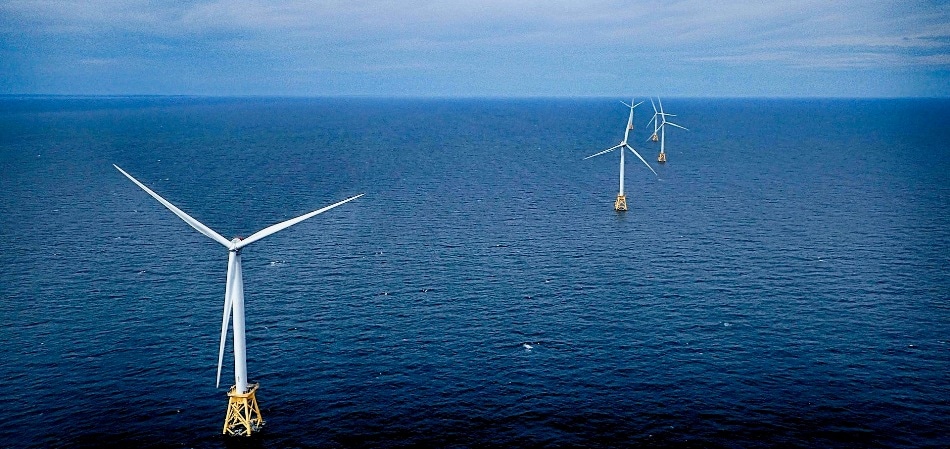Apr 3 2019
In the last ten years, wind power production in the United States has tripled, turning out to be the biggest source of renewable energy in the country.
 The Block Island wind farm off the Rhode Island coast. (Image credit: Yale School of Forestry and Environmental Studies)
The Block Island wind farm off the Rhode Island coast. (Image credit: Yale School of Forestry and Environmental Studies)
Over 56,800 wind turbines exist in 41 states and territories, producing over 6% of the nation’s electricity, supporting over 105,000 jobs and earning billions of dollars in public as well as private investment.
Although the large majority of that production is taking place on land—a rare exception being a small commercial wind farm off the Rhode Island coast—the U.S. Department of Energy (DOE) has drafted a perspective plan to extend the nation’s wind sector into offshore waters.
A new Yale study determined that execution will not be as easy, or possibly as green, as it may appear.
Reporting in the journal Nature Sustainability, Tomer Fishman, a former post-doctoral student at Yale School of Forestry and Environmental Studies (F&ES) and current lecturer at the IDC Herzliya in Israel, and Thomas Graedel, a professor emeritus at F&ES, challenged the DOE’s plan, concentrating particularly on the challenge of providing rare-earth metals necessary to construct these offshore wind turbines and the environmental, economic, and geopolitical problems at play.
Fishman explained that the turbines such as the ones located off the Rhode Island coast are massive; they are as high as the Washington Monument, with a blade diameter larger than a football ground. Moreover, these turbines need extremely powerful magnets that are made of neodymium, which is a rare-earth metal. Also, large quantities of neodymium are needed: approximately 2000 pounds is required to make each magnet.
Almost all of the world’s neodymium is extracted in China, where environmental regulations are less strict and costs are cheaper, Fishman stated. The magnets are made in Japan, later transported to France where they are fixed to the turbines. Through each step along the way, problems such as the current fractious trade relationship between the United States and China can “cause a bottleneck in the supply chain,” he said.
According to Fishman, the availability of neodymium is also not considered by the DOE plan. Earlier, the United States has mined neodymium—at California’s Mountain Pass rare earth mine—however, due to financial troubles and environmental concerns, the operations were stopped many years ago.
Fishman and Graedel tried to address the potential problems in their paper, applying specific calculations to the plans put forth by the DOE. They determined that developing a domestic program to construct and install offshore wind turbines would produce a complex web, raising questions of regional demand, natural resource consumption, and the recyclability of the turbine technology, particularly, the reuse of neodymium.
Fishman reported that their estimations could initiate a practical conversation of internalizing production of these turbines, which he hoped is possible with the proper management.
We can’t be sure that offshore wind power will take off in the U.S., but there are a lot of positives. We’ve seen land-based wind power in the U.S. succeed, in spite of political partisanship. Though this has added layers of complexity, there’s some promise there. What we’re doing now is creating a roadmap to navigate the timing and scale of production,” he added. “We’re really starting from scratch, which gives us the time to do it right and conduct more research. This is a good starting point.
Tomer Fishman, Former Post-Doctoral Student, Yale School of Forestry and Environmental Studies.